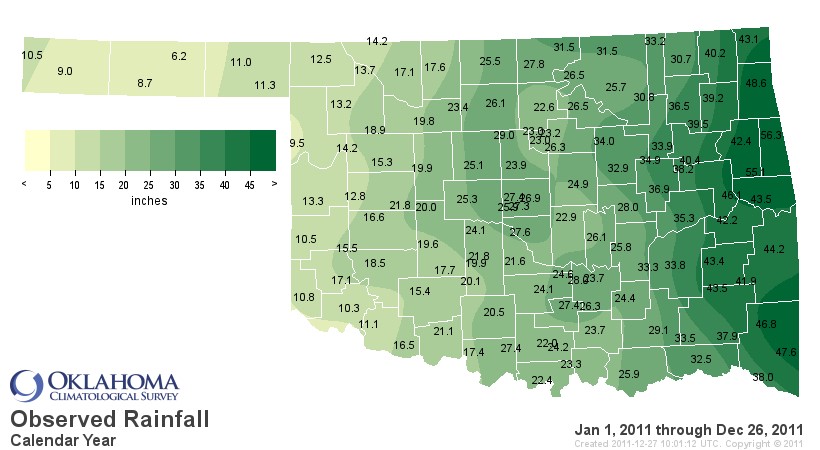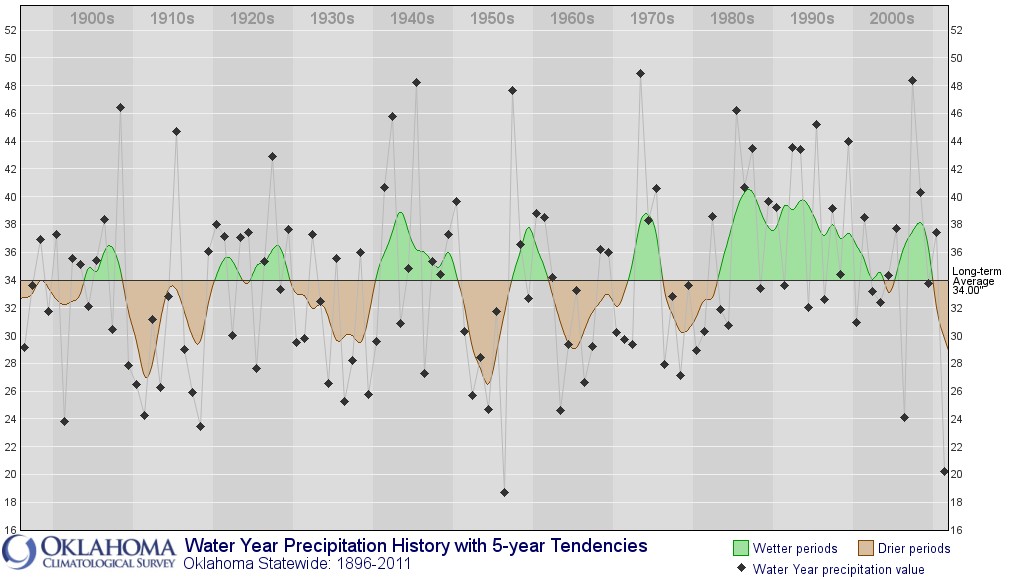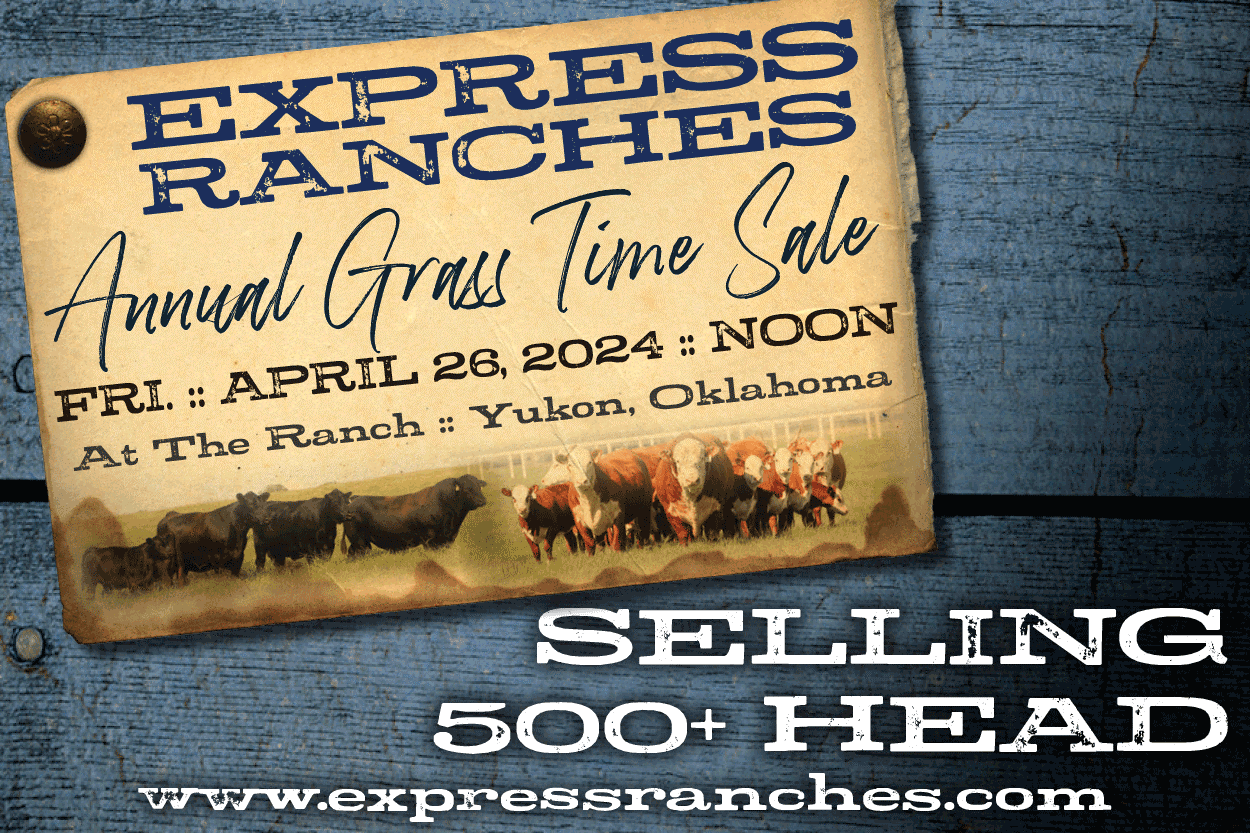
Agricultural News
Hooker on Track to Have Driest Year of Any Location in Oklahoma- Ever
Tue, 27 Dec 2011 19:10:09 CST
 Gary McManus, Associate State Climatologist for the Oklahoma Climatological Survey offers us a review of rainfall totals for the year- including the graphic above that shows a fifty inch spread of most to least rainfall across the state for 2011- year to date.
Gary McManus, Associate State Climatologist for the Oklahoma Climatological Survey offers us a review of rainfall totals for the year- including the graphic above that shows a fifty inch spread of most to least rainfall across the state for 2011- year to date.
Gary writes "It became fairly obvious early on that the western half of the state was going to experience a heightened case of drought compared to eastern Oklahoma. Drought relief in April and May brought the drought to a screeching halt in the eastern one-third before the heat and dry weather brought it back in June. No such luck for western Oklahoma, and the year-to-date precipitation map from the Oklahoma Mesonet paints that picture quite well.
"Hooker is still bringing up the rear at 6.2 inches. As a reminder, the lowest measured annual total for any single location in the state is 6.5 inches from Regnier in 1956. But you can see the clear gradient from west to east. Now that is also the normal gradient the state sees with decreasing totals as you go higher and farther west. But superimposed on that gradient is the diminished precipitation associated with the drought. It is almost certain that 2011 will finish somewhere around the 10th driest in Oklahoma since records began in 1895.
I actually consider that a rather nice finish considering up through September we were well on our way to the driest year on record.
"Let's remember that the drought started in October 2010, however. We sometimes like to set beginning and ending dates based on the calendar that Mother Nature simply doesn't care about. Let's take a look at the drought from beginning to its zenith in September 2011. The graphic below is a look at the statewide average precipitation total for each water year (October 1-September 30) from 1895 through this year.
"A couple of things ... first off, the 2010-2011 (Oct 1, 2010-Sep 30, 2011) water year was clearly the second driest on record statewide, second only to the 1955-1956 water year. Second, the record also clearly shows the reduction of variability starting in the 1980s and lasting through the current period.
"All those dry water years tend to disappear in the last 30 years and we are left with an unusually consistent wet period, with very few totals ending up in negative territory. The severe droughts of 2005-06 and 2010-11 are in stark contrast to every other period in the past three decades, and especially to the 2006-07 water year, the second wettest on record. "

WebReadyTM Powered by WireReady® NSI
Top Agricultural News
More Headlines...



















